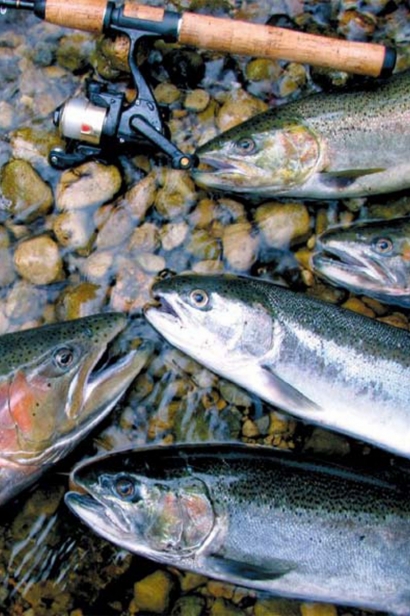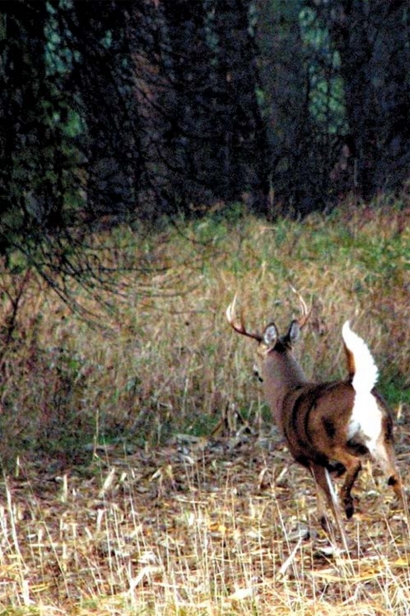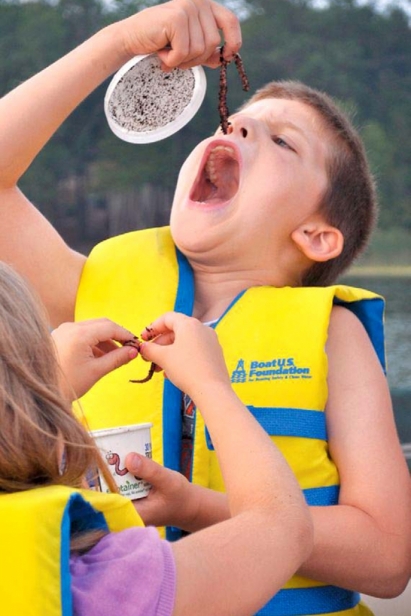Preserving a Sustainable Outdoor Feast
Fall is prime time on the water and in the woods
One of the greatest joys any seasoned outdoors lover can have is seeing the look in a young person’s eyes when they have their first close encounter of the wild kind.
Whether it’s a bobber disappearing from the surface of a lake or a white-tailed deer suddenly appearing in a forest opening, it’s something that neither the mentor or beginner will likely ever forget.
Unfortunately, those moments frozen in time aren’t as common as they used to be. As our world has become more wired, state departments of fish and wildlife, conservation and natural resources are scrambling to recruit more hunters and anglers.
Passing on our conservation heritage to the Wi-Fi generation may prove to be challenging. But those who value wild places will watch for inquisitive minds and teachable moments.
They’d better.
Wisconsin’s sport fishing and hunting industries are worth more than $4 billion to the state’s recreation economy and support more than 50,000 jobs.
Few citizens find fault with anglers, but hunters — who help maintain wildlife populations at socially acceptable levels and within habitat carrying capacity — are often misunderstood.
There’s still hope.
More people today are aware that the choices they make can affect the environment, and there’s a generation of young adults who’ve heard a lot about “green, sustainable, free-range and organic.”
Outside our largely rural Door Peninsula borders, it’s a safe bet that many of these men and women don’t know that modern hunting has always been a green activity.
Some may even equate hunting to the unregulated market gunning of the 18th and 19th centuries.
Nothing could be further from the truth. Modern hunters demanded regulations to protect and restore game populations and typically harvest only the surplus each year.
Further, it was largely through the efforts of hunters, anglers and other conservationists that a user-based system was developed — license fees and excise taxes on sporting equipment — to pay for fish and wildlife management, habitat acquisition and improvement and public access to woods and waters for all.
Misunderstood or not, hunters have always been a natural part of the locavore movement.
Keith Warnke, the Wisconsin Department of Natural Resources’ hunting and shooting sports coordinator, said resources conservation, sustainability and hunting naturally fit hand in hand. He encourages adults to look past the stereotypes and explore why hunters do what they do. Hunting is an integral part of the fabric of Wisconsin life and a great source for locally produced food,” said Warnke.
Wild fish and game are indeed nourishing for the body, but fishing and hunting go much deeper than setting the hook or pulling the trigger.
In his book, Last Child in the Woods, author Richard Louv hypothesizes that human beings — especially children — are spending less time outdoors resulting in a wide range of behavioral problems. He calls it nature deficit disorder.
Louv believes that the increasing consumption of electronic media combined with parental fears and less accessibility to natural areas is behind the phenomenon. Sensationalist media coverage and paranoid parents, he argues, have literally “scared children straight out of the woods and fields.”
On the other hand, Jim Sterba’s book, Nature Wars, examines the paradox of the rebound of wild game species in the past century. Many people, Sterba explains, have no idea what to do when wildlife invades their backyards. They don’t want goose droppings on their lawn, deer and rabbits eating their expensive flowers and ornamentals or wild turkeys, squirrels and black bears raiding their bird seed, but can’t stomach the idea of killing them.
Hunters and trappers get that, and where they’re able to, most are more than willing to help out. Yet they’re not out to kill everything that moves. In fact, they often go home with nothing more than memories of the nature they sought, and found.
That’s OK. Just being active and breathing the fresh air helps reduce stress and increase positive thoughts.
Many modern hunters — conservatives and liberals alike — fish, forage for morels and wild asparagus and grow some fruits and vegetables.
Our family loves to feed and watch birds, take drives to view and photograph wildlife or gaze at the stars on a dark, clear night. We bike the state parks, swim out from sandy beaches and hike logging trails to spy colorful leaves in the autumn woodlands.
But we’ve tasted the wild side of the Peninsula, and love it. It’s literally a part of all of us, including our children whose favorite baby food was small pieces of fresh-caught salmon; by toddler age, they devoured pan-seared venison tenderloin and wild turkey and rice from the crock pot. Today, there’s no bigger blessing than passing on what I’ve learned over decades of changing times to my wife — yes, the classically trained harpist and teacher loves to hunt and fish, too — and three kids.
From sharing the bounty of God’s creation to watching the colorful and always unique sunrises and sunsets, it’s an innate passion and a sobering escape from what too often can be a blurred and worldly view of life.
Nearly a half-century ago, an angel known simply as Mom got me hooked on fishing. Sometimes she let me cast from the dock for hours while she waited in the car, or gave me enough money to rent a boat at one of the local lakes.
“Please be careful,” she would say, over and over and over again.
Those seemingly small leaps of faith from a single mother to her youngest child — eighth, no less — was the seed that sprouted into an overwhelming desire to pass on that love of the outdoors. The lake; The fish; The woods; The wildlife. And of course, all those tasty wild game feasts.
Thank you, Mom.








